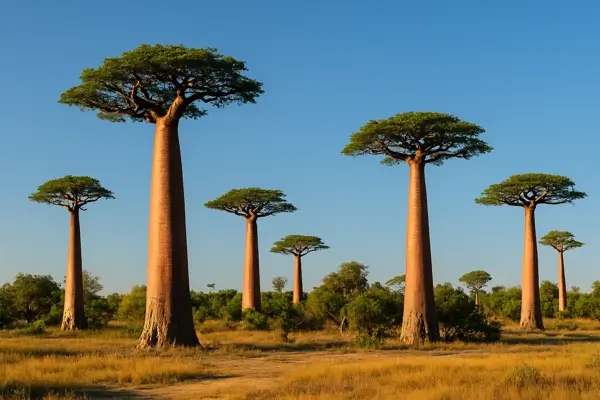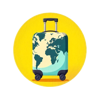
The World's Fourth Largest Island
Madagascar is the fourth largest island in the world, located off the southeastern coast of Africa in the Indian Ocean.
Unique Wildlife
Madagascar is home to a remarkable variety of endemic species, meaning many plants and animals are found nowhere else on Earth, such as the famous lemurs, chameleons, and the fossa (a cat-like carnivore).
Biodiversity Hotspot
The island is often referred to as a "biodiversity hotspot" because of its incredible variety of unique flora and fauna, with 90% of its wildlife found only in Madagascar.
A Diverse Landscape
Madagascar has a wide range of geographical features, from lush rainforests and savannas to dry deserts and highland plateaus, creating a diverse ecosystem.
Rich Cultural Heritage
Madagascar has a rich cultural history with a blend of African, Asian, and European influences. The Malagasy people have unique traditions, including a distinctive music and dance scene.
Home to the Avenue of the Baobabs
One of Madagascar’s most iconic landmarks is the Avenue of the Baobabs, a striking line of giant baobab trees, some of which are over 800 years old.
The Malagasy Language
The official language of Madagascar is Malagasy, which is of Austronesian origin and shares linguistic ties with languages spoken in Southeast Asia and Polynesia.
Vanilla Capital
Madagascar is the world’s largest producer of vanilla, accounting for around 80% of the global supply, particularly the highly valued Bourbon vanilla.
Rich History of Pirates
In the 17th and 18th centuries, Madagascar was a pirate haven, and it is believed that the infamous Captain Kidd and other pirates used the island as a base for their activities.
A Fragile Ecosystem
Despite its incredible biodiversity, Madagascar’s environment is under threat from deforestation, illegal logging, and wildlife trafficking, putting its unique species and habitats at risk.



